10 BEST State Parks in Florida (Beaches, History, Springs & Hidden Gems!)
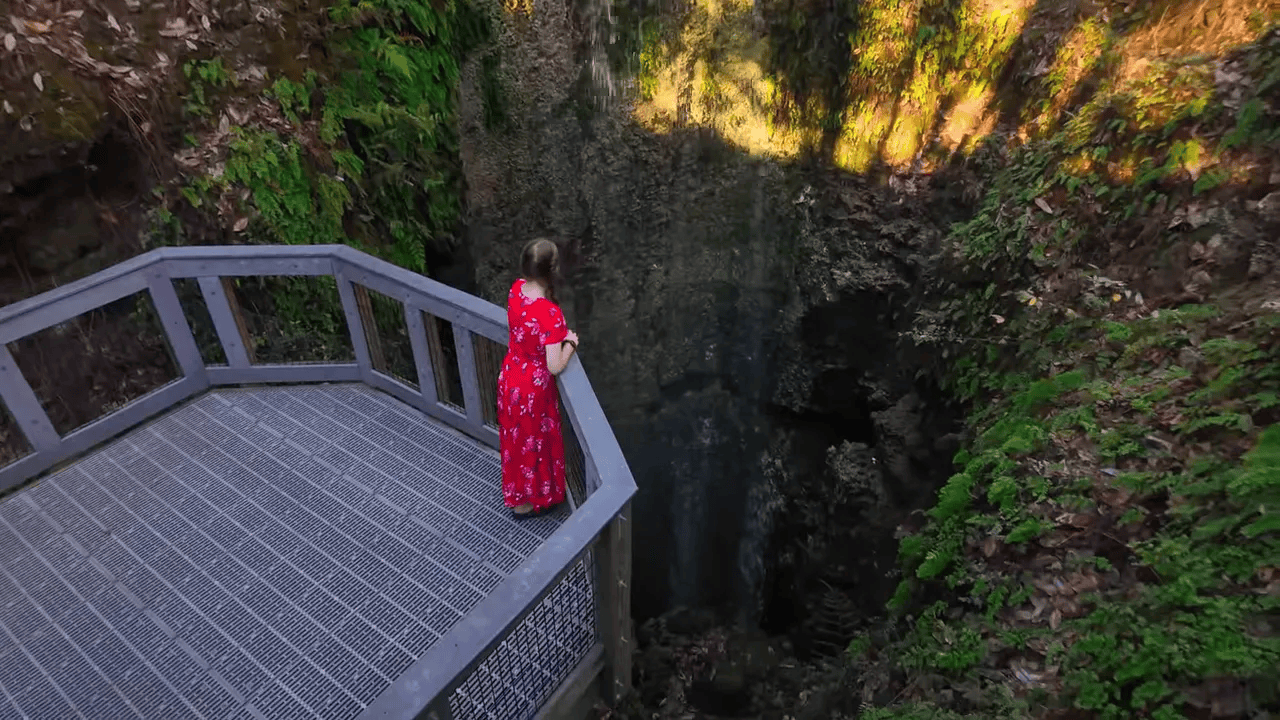
FloridaLists has assembled a practical guide to the very best state parks in Florida — a curated list of ten must-visit parks that represent the diverse landscapes, history, and natural wonders of the Sunshine State. From dramatic sinkholes and hidden caverns to warm springs where manatees gather and one of the Keys’ most beloved beaches, these state parks in Florida offer affordable, unforgettable outings for families, photographers, and outdoor enthusiasts.
With more than 170 state parks in Florida, picking where to go first can feel overwhelming. This article breaks down ten standout parks, including what to see, when to visit, entrance fees mentioned where available, and practical tips to make the most of each trip.
Why Visit State Parks in Florida?
Florida’s network of state parks is unique among U.S. state systems because it protects a wide range of ecosystems: karst springs, coastal dunes, coral-fringed shores, cypress swamps, and rare upland scrub. These parks are often more affordable than private attractions, and they provide low-impact ways to experience Florida’s natural and cultural heritage. Whether looking for a short family outing, an afternoon of snorkeling, or a day of hiking and photography, the state parks in Florida deliver big experiences for modest prices.

1. Falling Waters State Park — The Panhandle’s Mysterious Waterfall
Located in the Florida Panhandle, Falling Waters State Park is one of the most surprising stops among state parks in Florida. This park is home to Florida’s tallest natural waterfall — a 73-foot cascade that plunges into a sinkhole. That alone would be worth a visit, but the real intrigue is what happens to the water after it reaches the bottom. The sinkhole swallows the outflow and, to this day, the underground exit routes remain a mystery to hydrologists and park visitors alike.
Highlights:
- 73-foot waterfall dropping into a sinkhole — rare for the region.
- Scenic trails that descend to the sinkhole rim and pass by multiple other sinkholes.
- Playground and picnic facilities ideal for families.
Practical tips:
- Entrance fee: approximately $5 per car (confirm current fees before visiting).
- Wear sturdy shoes for the hike down to the sinkhole rim — the trail can be steep.
- Plan for shade and bring water; the Panhandle sun can be intense.
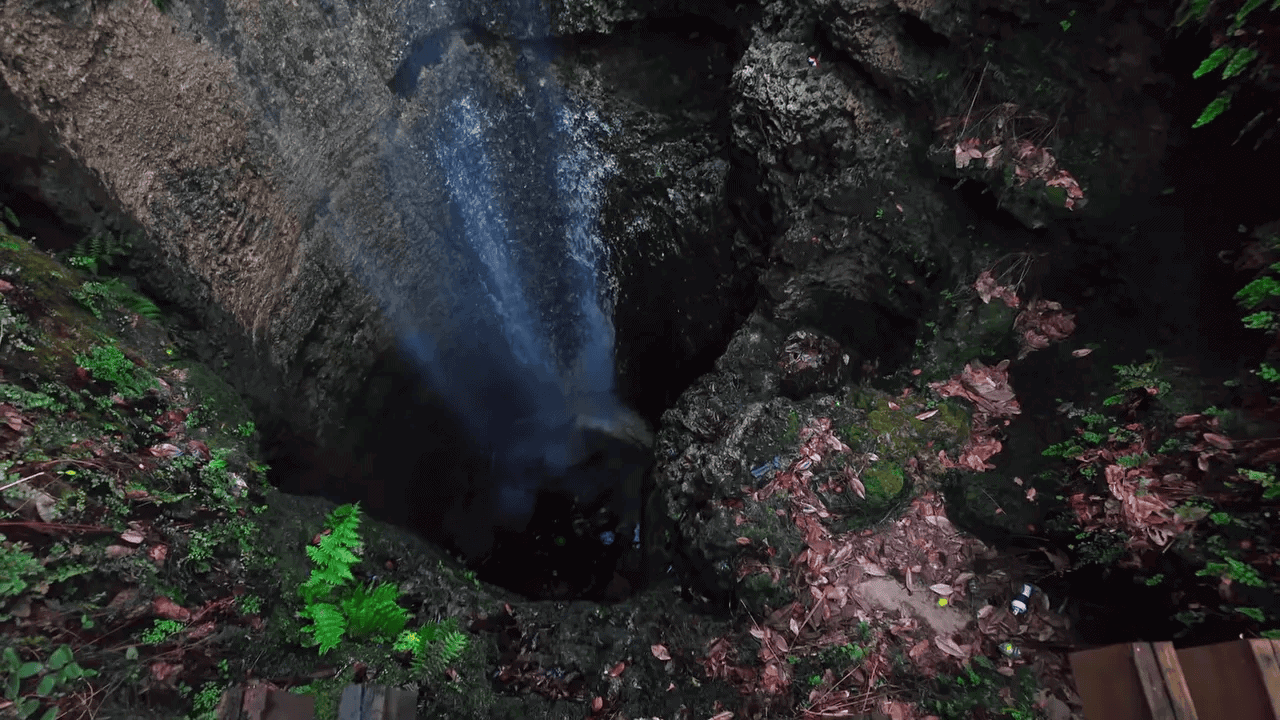
2. Fort Zachary Taylor State Park — History and One of Key West’s Best Beaches
Fort Zachary Taylor State Park sits at the southern tip of Key West and is one of the most valuable historical and coastal assets among state parks in Florida. Fort Zachary Taylor is boasts a beautiful stretch of sand and excellent nearshore snorkeling. The park also protects a 19th-century fort that once guarded Key West Harbor.
Highlights:
- Historic Fort Zachary Taylor — guided tours available or explore independently.
- One of Key West’s best beach areas, with clear water and coral outcrops for snorkeling.
- Picnic areas and walking trails with coastal views.
Practical tips:
- Entrance fee: around $6 per car for up to eight people (verify before travel).
- Bring reef-safe sunscreen and snorkeling gear for the best experience.
- The Florida Keys are pricier than mainland Florida; this park is a budget-friendly blend of beach and history.
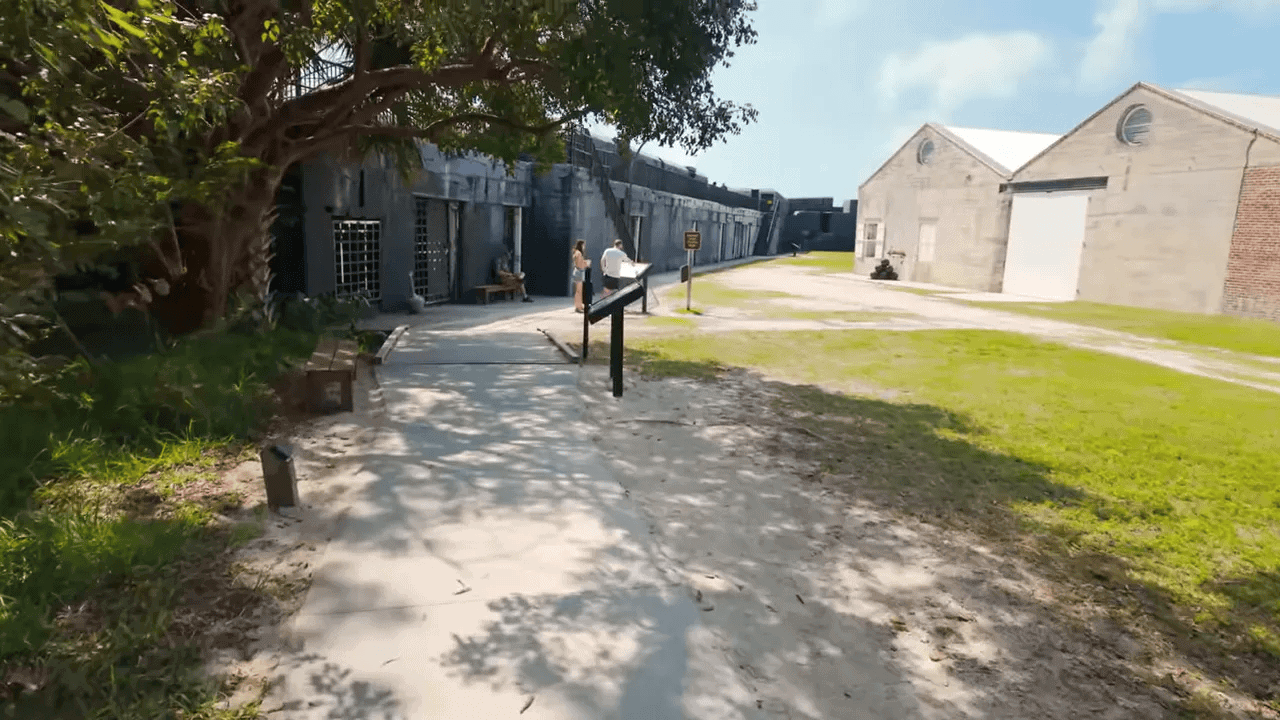
3. Florida Caverns State Park — Real Caves in the Panhandle
Not all of Florida’s best features are above ground — Florida Caverns State Park in Marianna showcases subterranean wonders. Visitors descend roughly 75 feet to tour a cave system with sculpted stalactites, stalagmites, and even fossilized sand dollars and shells from the ancient ocean that once covered the region. The tours last about an hour, and the cave’s temperature stays near 65°F year-round, making it an excellent stop any season.
Highlights:
- Guided cavern tours through illuminated rooms and passages.
- Evidence of ancient marine life preserved in limestone.
- Surface hiking trails, including a cave once used by indigenous peoples.
Practical tips:
- Entrance fee: generally about $5 per car; guided cavern tours commonly $15 per person (check current pricing).
- Dress in lightweight layers — the caves are cool but humid; avoid bulky jackets.
- Photography is often allowed on the surface; follow guide rules inside caverns to protect formations.
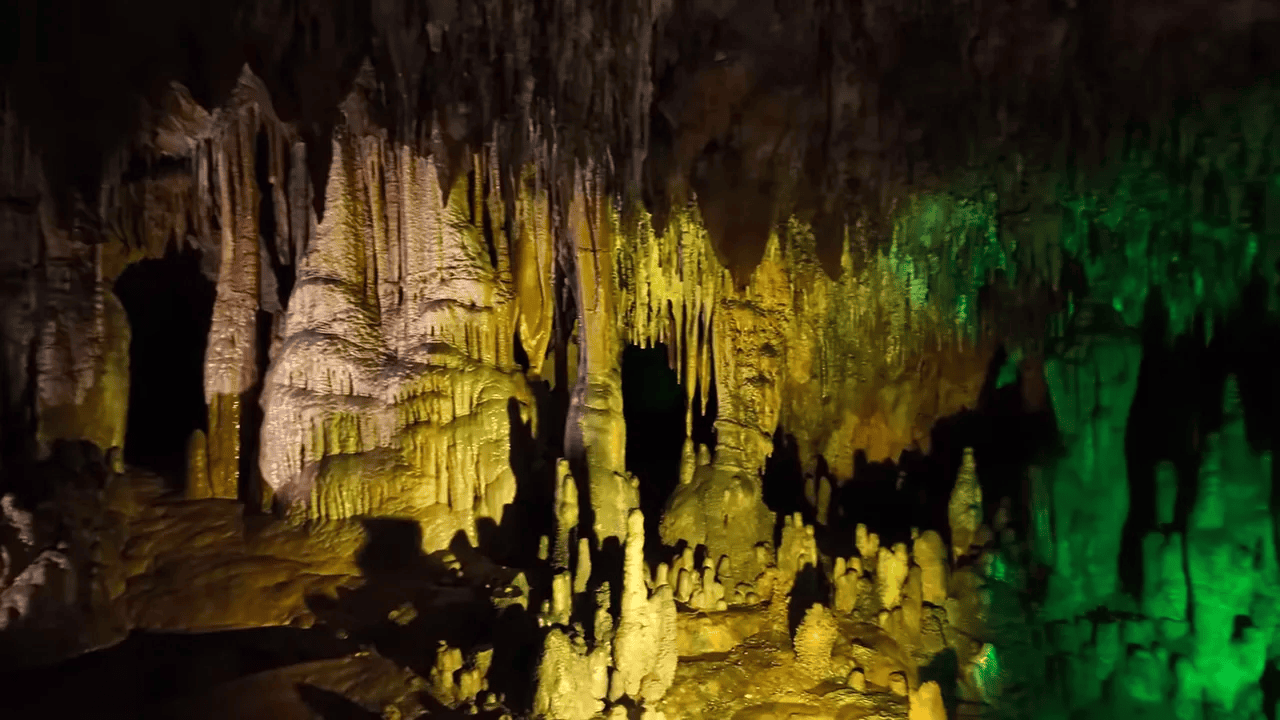
4. Gilchrist Blue Springs State Park — A Family-Friendly Spring Near Gainesville
Gilchrist Blue Springs State Park, near High Springs and about 30 minutes from Gainesville, is one of the newer additions to the state parks in Florida roster. The spring boils up water at a steady 72°F year-round and produces an astounding 44 million gallons of fresh water each day. What makes this spring particularly family-friendly is its zero-entry sandy shoreline, which means the bottom slopes gently into the water like a beach rather than dropping off suddenly. This creates a shallow, clear area that’s perfect for children to wade and splash safely, giving parents peace of mind while little ones enjoy the natural pool.
Highlights:
- Zero-entry sandy shoreline — safe and easy for kids to wade in
- 72°F water year-round and abundant flow rate.
- Options to rent kayaks or canoes and paddle the spring run (swimming often limited to the boil area).
Practical tips:
- Entrance fee: typically about $6 per car (2–8 people per vehicle). Confirm current rules before visiting.
- Swimming is generally limited to designated areas — follow park signage to protect wildlife and springs.
- Arrive early on weekends to secure parking during peak seasons.
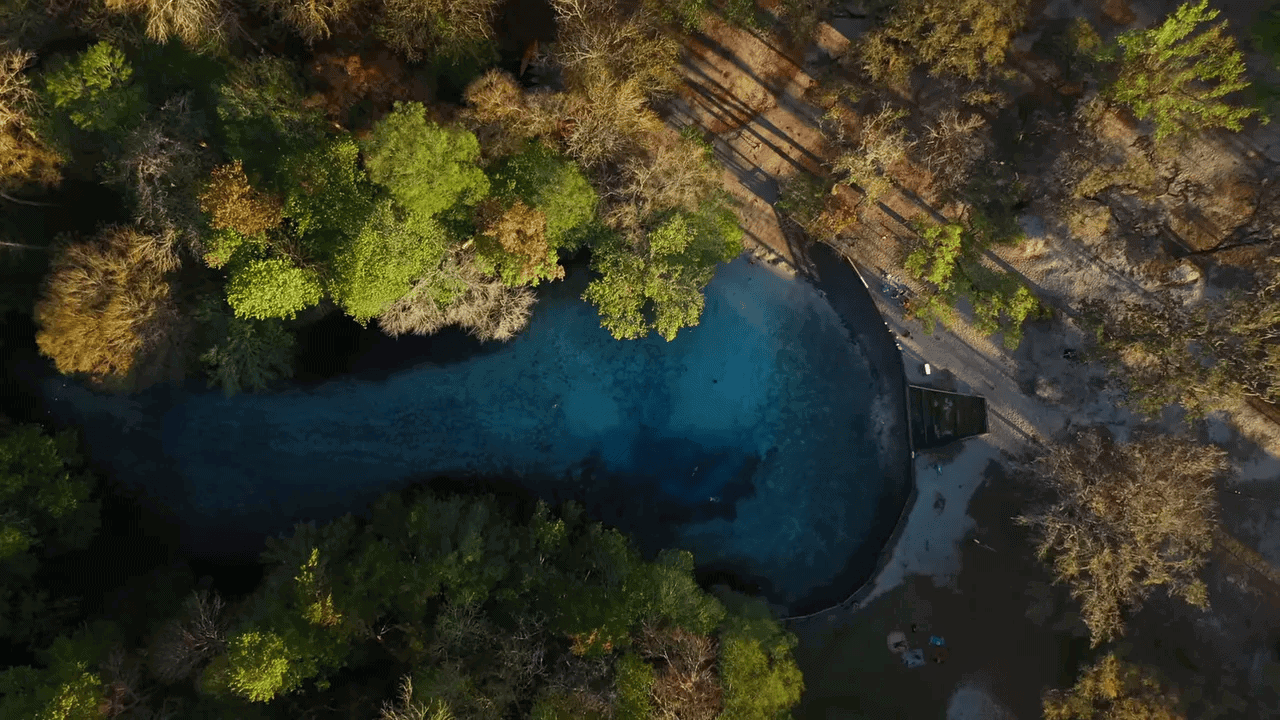
5. Maclay Gardens State Park — Formal Gardens and a Panhandle Gem
Maclay Gardens State Park, just outside Tallahassee, feels like a cultivated European estate tucked into the Florida Panhandle. It pairs a turn-of-the-century house with formal gardens, spring-fed lakes, and spectacular seasonal blooms. The park is a photographer’s dream and among the state parks in Florida that showcase how manicured landscapes can sit comfortably alongside wild natural areas.
Highlights:
- Turn-of-the-century home and historic landscape architecture.
- Seasonal blooms that transform the gardens into a photographer’s paradise.
- Lakeside views and walking paths that evoke cottage-garden charm.
Practical tips:
- Normal-season fee: around $6 per car; fees may change to $6 per person during peak bloom season (confirm before visit).
- Photography-friendly but follow any special rules or permit requirements for professional shoots.
- Visit during spring bloom for the most dramatic visuals; the gardens are impressive year-round for a peaceful walk.
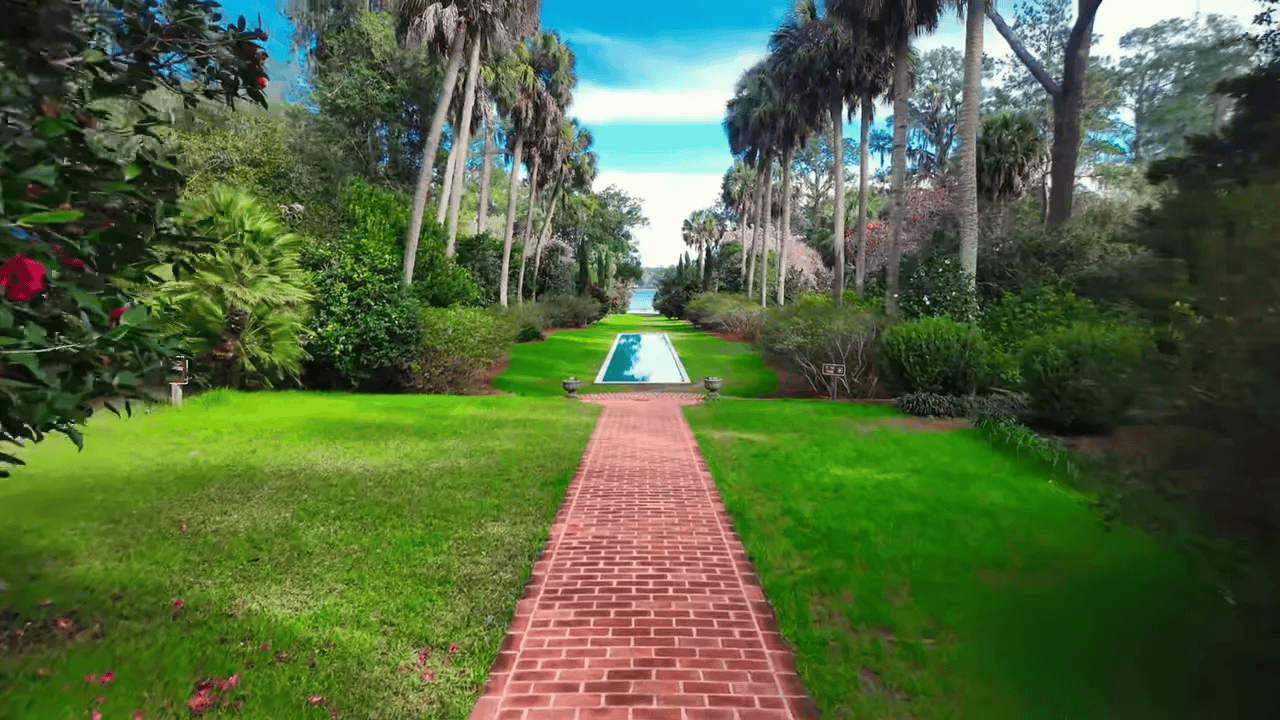
6. Hillsborough River State Park — Rapids, Trails, and Wild River Views Near Tampa
Only about 30 minutes from downtown Tampa, Hillsborough River State Park offers a surprisingly wild river experience among the state parks in Florida. The park is notable for its Class II rapids — rare in Florida — and for the scenic bridges and overlooks that skirt the river. It’s a great spot for day hikes, paddling, and photography of riverine habitats.
Highlights:
- Class II rapids for paddlers seeking a little excitement (skill and caution required).
- Over seven miles of nature trails and multiple river overlooks.
- Opportunities for canoeing and kayaking; swimming is not recommended due to wildlife.
Practical tips:
- Entrance fee: about $6 per car for day use (verify current rates).
- Do not swim in the river — alligators, snakes, and other wildlife inhabit these waters.
- Pack insect repellent and sun protection for hikes and river-side picnics.
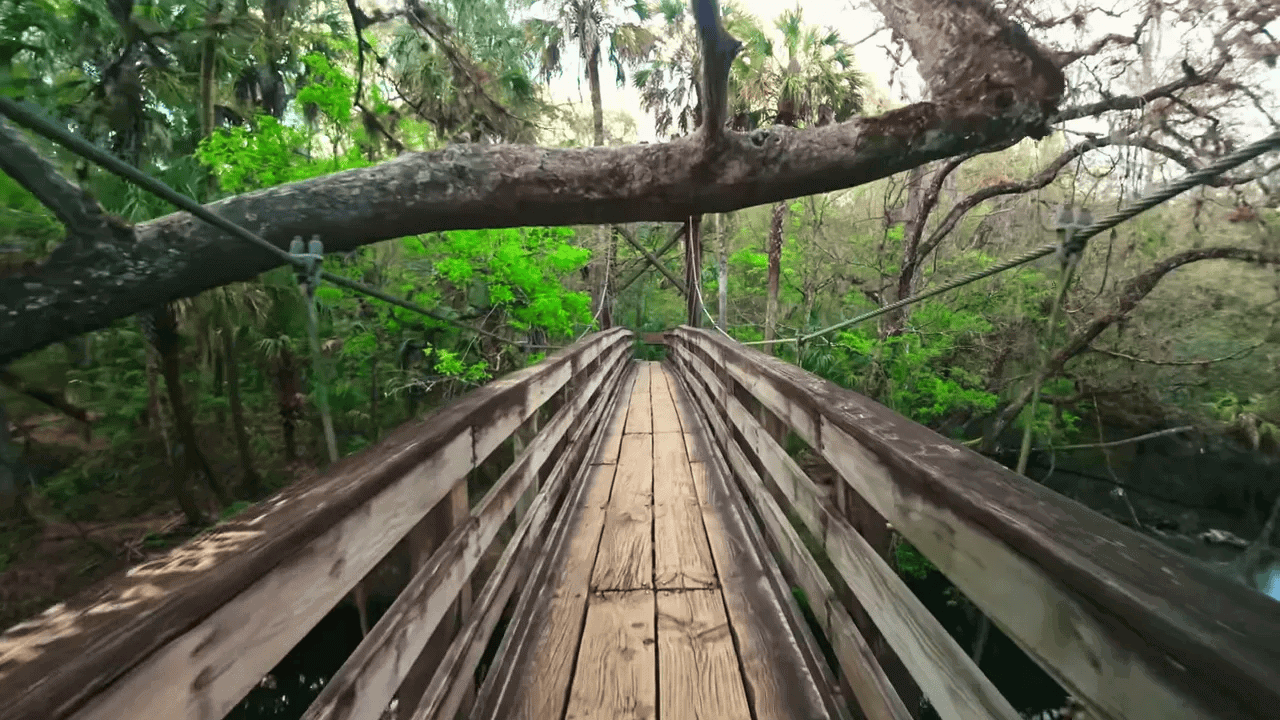
7. Wakawa Springs State Park (Apopka) — Spring Run and Trails
Wakawa Springs State Park near Apopka, roughly 30 minutes outside Orlando, is another high-flow spring favored by locals and day-trippers within the Orlando area. Producing about 42 million gallons of water daily at a consistent 72°F, Wakawa offers crystal-clear swimming at the boil and a network of trails that range from short nature walks to long multi-mile hikes and mountain bike routes.
Highlights:
- Consistent 72°F spring water and high daily flow.
- Hiking trails from one mile up to 13 miles for varied skill levels.
- Mountain bike trail opportunities and scenic creekside paddling.
Practical tips:
- Entrance fee: roughly $6 per car (2–8 people per vehicle). Always check park notices for capacity rules.
- Wakawa is a Seminole word for spring — the park name celebrates Southwest Florida’s indigenous language connections.
- Bring a change of clothes and a dry bag for electronics if planning a long paddling trip.
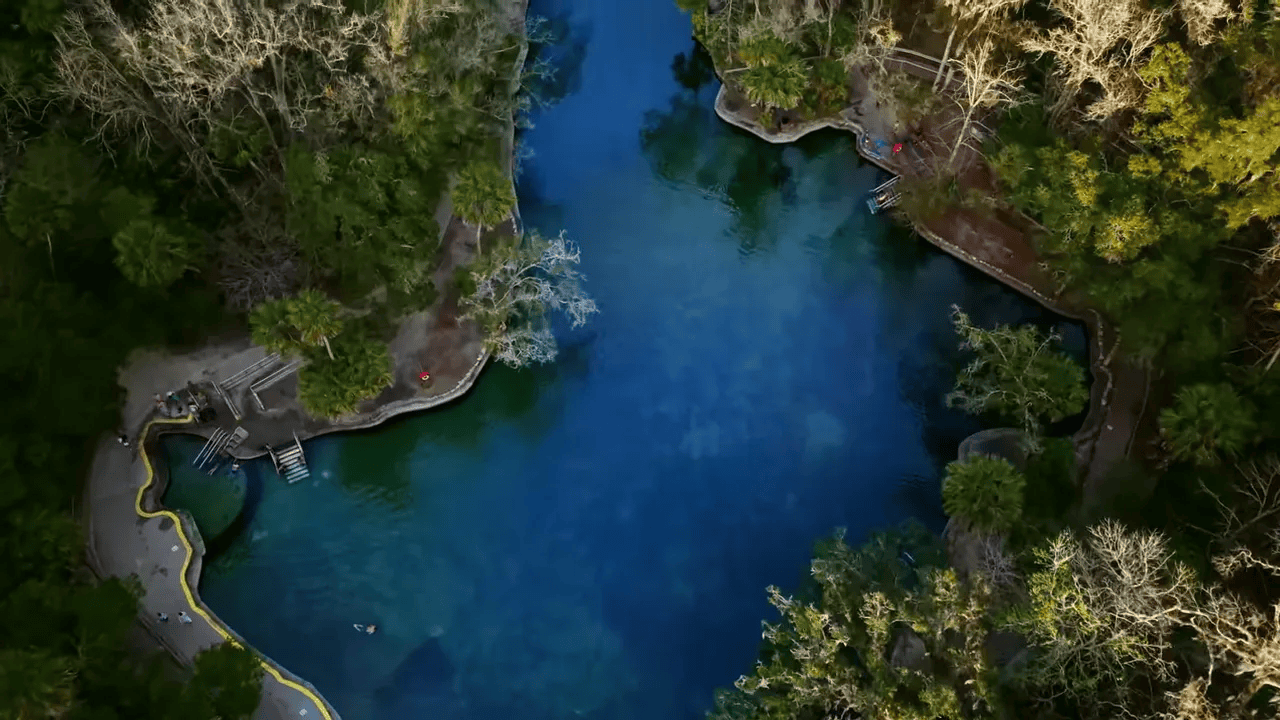
8. Bahia Honda State Park — The Keys’ Favorite Beach
Bahia Honda State Park, located at mile marker 37 on U.S. Highway 1, is often described as the quintessential Keys beach among state parks in Florida. Its wide sandy beaches, shallow snorkeling areas, and the old railroad bridge overlook make it a top pick for people traveling the Overseas Highway. The park’s nearshore snorkel opportunities and scenic views from the historic bridge add variety beyond sunbathing.
Highlights:
- One of the most popular beaches in the Florida Keys with excellent nearshore snorkeling.
- Historic Old Bahia Honda Bridge offering panoramic views and photo opportunities.
- Kayak and canoe rentals and reef tours from the concession stand.
Practical tips:
- Entrance fee: typically around $8 per car — the park can reach capacity, especially on high-season weekends.
- Arrive early on weekends and holidays to secure parking and avoid closures when the park reaches capacity.
- Bring shade, water, and reef-safe sunscreen; snorkeling gear often available to rent on-site.
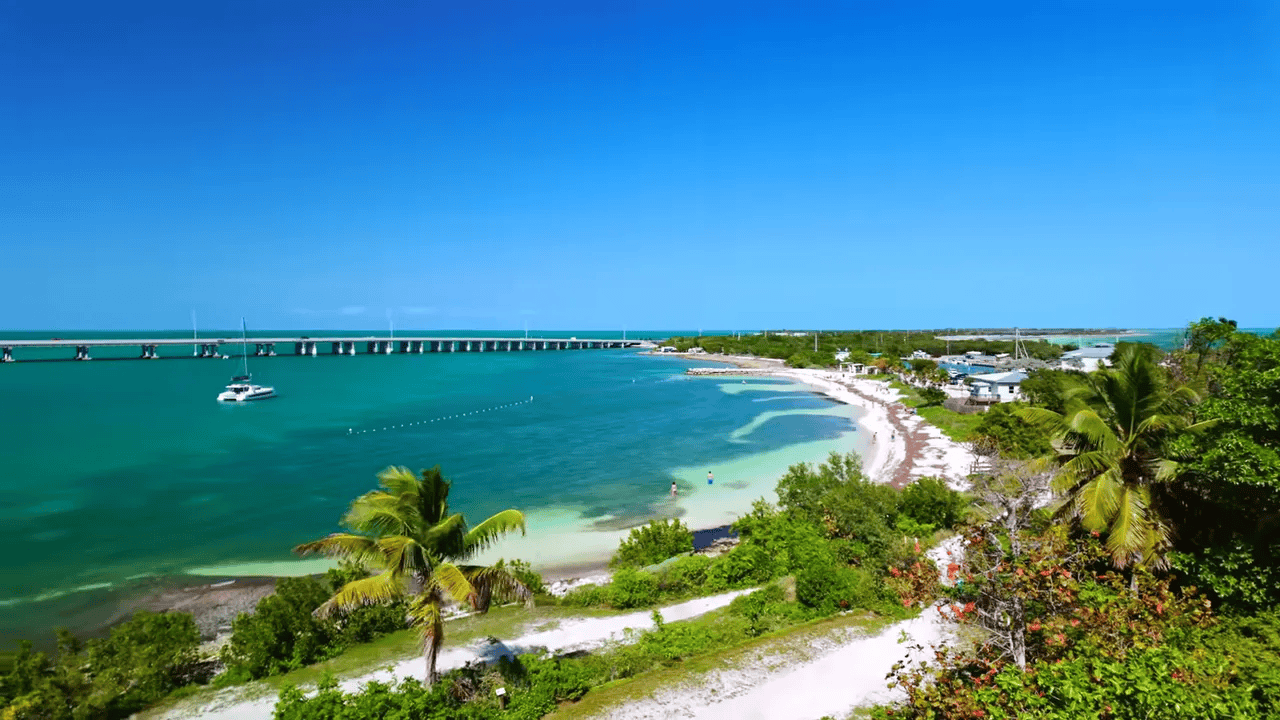
9. Eden Gardens State Park — A Gilded-Age Mansion and Quiet Gardens near 30A
Just off scenic Highway 30A in the Florida Panhandle, Eden Gardens State Park is a tranquil cultural and botanical oasis among state parks in Florida. The property centers around a white turn-of-the-century mansion built in 1897 that was later restored and furnished with family heirlooms. The gardens themselves offer intimate shaded walks, sweeping lawn vistas, and moss-draped oaks that make it a favorite for photographers and visitors seeking peaceful natural beauty.
Highlights:
- Turn-of-the-century mansion with guided tours explaining local history.
- Manicured gardens, century-old live oaks, and quiet reflecting ponds.
- Friendly policies for photographers, making it a popular location for portraits and engagement shoots.
Practical tips:
- Entrance fee: typically around $4 per car (confirm current fees and hours).
- Combine a garden visit with time exploring nearby 30A beaches and communities for a full-day itinerary.
- Be respectful of scheduled events or private photo shoots when visiting the garden areas.
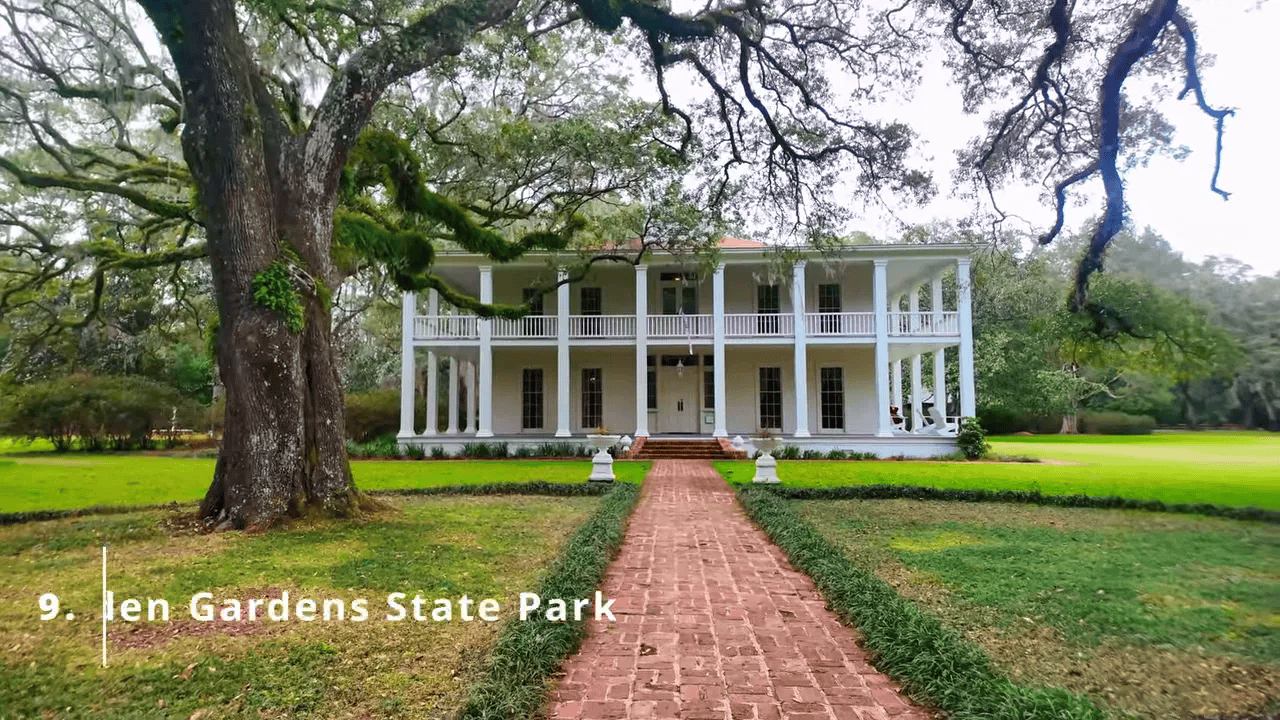
10. Blue Spring State Park — Manatee Refuge and Warm Spring Waters
Blue Spring State Park, near Deltona in the greater Orlando region, is a perennial favorite among state parks in Florida because of its role as a winter refuge for West Indian manatees. The spring water remains a constant 72°F year-round, creating a warm haven where manatees shelter during colder weather. In warmer months, the spring is open for swimming, but when temperatures drop and manatees arrive, park officials often restrict access to protect these gentle marine mammals.
Highlights:
- Reliable winter manatee viewing from walkways and observation platforms.
- 72°F spring water year-round that supports a healthy spring-run ecosystem.
- Seasonal recreation: swimming allowed in summer; restricted areas during manatee season to avoid disturbance.
Practical tips:
- Entrance fee: usually about $6 per car (2–8 people); check for updates during peak seasons.
- Best time to see manatees is during the cooler months — follow all park rules for viewing and distances.
- Bring binoculars for wildlife watching and a camera with a zoom lens for respectful photography.
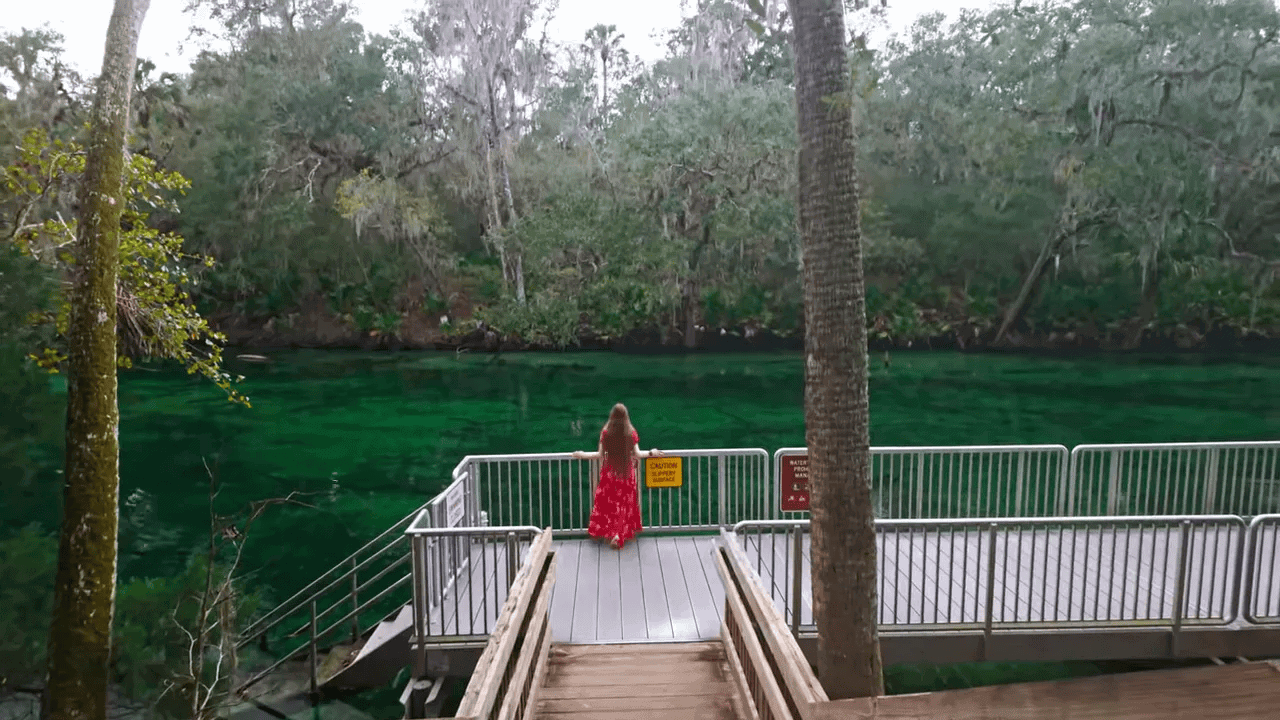
Planning Tips for Visiting State Parks in Florida
Making the most of the state parks in Florida requires a bit of planning. Here are practical tips that apply across many parks:
- Check park websites or local social media for current hours, fees, and capacity alerts. Many parks adjust rules for seasons and wildlife protection.
- Pack what nature requires: water, sun protection, insect repellent, and sturdy shoes. If visiting springs, bring towels and dry bags.
- Arrive early on popular weekends and holidays. Parks with popular springs or beach access can reach capacity and close entry.
- Respect wildlife and posted closures. For example, springs that host manatees often close swim areas to prevent disturbance.
- Consider purchasing an annual state parks pass if visiting multiple parks; it can be economical for frequent visitors.
Accessibility and Family Considerations
Many state parks in Florida are family-friendly, with playgrounds, picnic shelters, and shallow spring entries for kids. However, accessibility varies: some parks have boardwalks and paved paths while others involve uneven trails and steep descents (like Falling Waters). Check accessibility statements on park pages if mobility concerns are present. For families, springs with zero-entry and sandy bottoms, such as Gilchrist Blue Springs, are excellent choices for little ones.
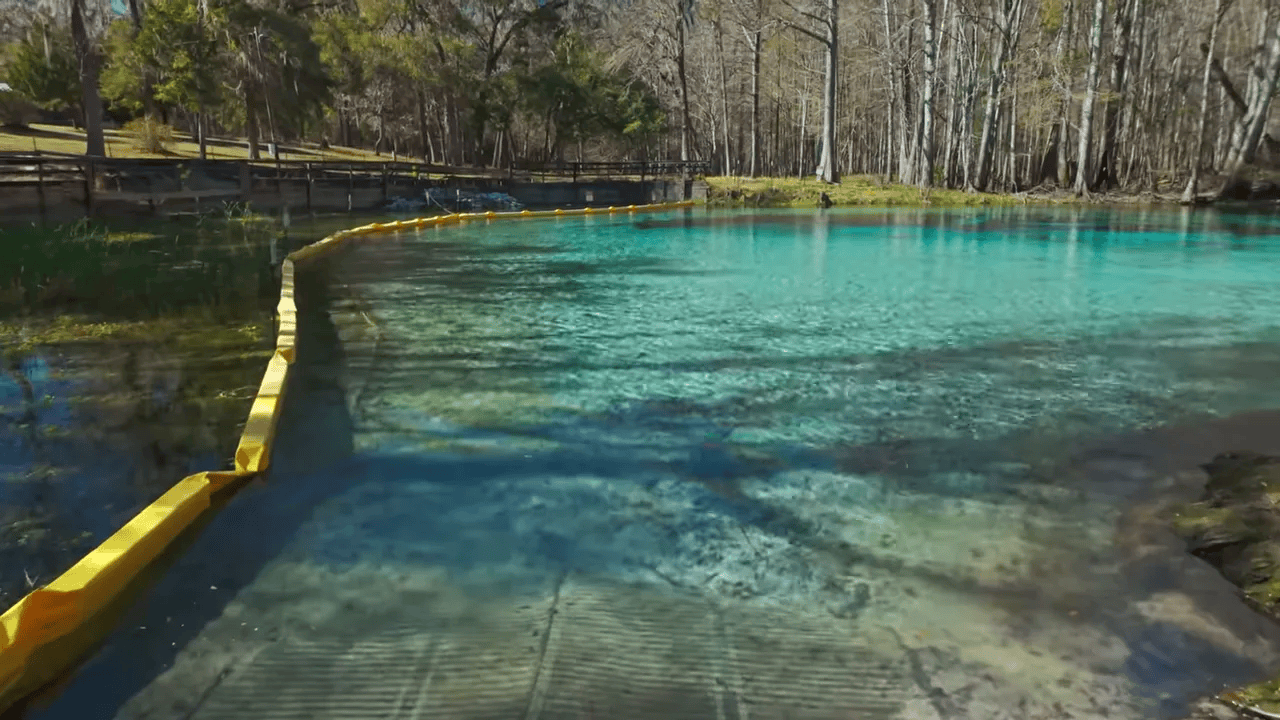
Responsible Visitation and Wildlife Safety
Part of being a responsible visitor to state parks in Florida means acknowledging and protecting the wildlife that depends on those habitats. Whether it’s keeping a respectful distance from manatees at Blue Spring, avoiding contact with alligators at river parks, or following closed-area signage in caves and springs, visitors should prioritize the animals and ecosystems over personal convenience.
Some quick rules of thumb:
- Observe wildlife from a distance; never feed or touch wild animals.
- Follow park-specific rules for watercraft, snorkeling, and swimming zones to protect habitat and yourself.
- Stay on designated trails to avoid trampling sensitive vegetation and to reduce erosion.
Short Notes: parks in Jacksonville and Duval County
For readers based near Florida’s First Coast, several state parks in Florida are conveniently located for quick getaways. This broader guide mentions popular destinations across the state, and those interested in parks in Jacksonville will find nearby options for river paddling, beaches, and forests. Duval County residents and visitors often pair a state park day trip with local dining and coastal sightseeing for a full Florida experience.
FAQs
Q: Do state parks in Florida charge entrance fees?
A: Most state parks in Florida charge nominal entrance fees per vehicle or per person. Fees vary by park and season — examples include $5–$8 per car or occasional per-person rates during special seasons. Check the park’s official site for the most accurate, up-to-date fee information.
Q: When is the best time to visit the springs?
A: Springs are pleasant year-round because many maintain constant temperatures around 72°F. For swimming and warm-weather activities, summer is ideal. For wildlife viewing — particularly manatees — winter months offer the best chance to see these animals seeking warm water.
Q: Are dogs allowed at state parks in Florida?
A: Many state parks in Florida permit dogs on leashes, but rules depend on the specific park and the areas within the park. Dogs are typically not allowed in swimming areas or inside historical buildings. Always consult the specific park’s rules before bringing a pet.
Q: Are reservations needed or recommended?
A: For some parks and especially for cabins, campsites, or during busy seasons, reservations are recommended. Day-use parks generally operate on a first-come, first-served basis, and some parks may temporarily close when they reach capacity, so arriving early is often the best plan.
Q: Can I bring a drone to photograph the parks?
A: Drone policies vary by park. Many state parks in Florida prohibit drone use to protect wildlife and visitor privacy. Always check a park’s regulations and obtain any necessary permits before flying.
Final Thoughts and Suggested Itineraries
Exploring state parks in Florida offers far more variety than most people imagine. For travelers building an itinerary, here are a few suggested pairings:
- Panhandle Garden + Cave Day: Combine Maclay Gardens with Florida Caverns for a day of cultivated beauty followed by subterranean exploration.
- Spring Hop: High Springs area springs like Gilchrist offer a water-lover’s loop that’s great for families and paddlers.
- Keys Coastal Day: Pair Bahia Honda with Fort Zachary Taylor to enjoy both the Keys’ best beaches and a slice of maritime history.
- Central Florida Wildlife Loop: Blue Spring for manatees and a nearby river park for paddling provides wildlife viewing and active recreation.
Each park highlighted here represents a different facet of the state parks in Florida experience: geological oddities, historical sites, crystalline springs, cultivated gardens, and coastal treasures. Whether planning a long road trip through multiple regions or a single, well-chosen day trip, these ten parks are excellent starting points for exploring Florida’s natural and cultural landscape.
Readers are encouraged to visit official park pages for the latest conditions, fees, and advisories before travel. With a little planning, a visit to any of these parks will be memorable, affordable, and restorative.
